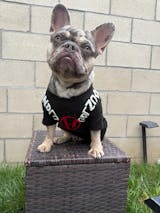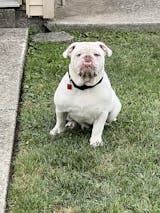Why Is My Dog Itchy, But Doesn’t Have Fleas or Ticks?
If you’ve noticed your furry friend scratching, biting, or rolling around like a maniac but haven’t spotted any pesky fleas or ticks, you’re not alone! Many dog owners find themselves asking, “Why is my dog itching so much?” Well, there are several reasons why your pup might be uncomfortable, and we’re here to help you figure it out!

Pesky Parasites:
Parasites can be a sneaky source of irritation for your dog, leading to persistent itching and discomfort. In addition to fleas and ticks, mites and lice can infest your pup, causing them to scratch, bite, or chew at their skin. Look for signs like redness, swelling, hair loss, or even scabs in areas where your dog is scratching the most. You might also notice your dog shaking their head frequently or rubbing their face against surfaces, indicating potential ear mites.
Food Allergies:
Food allergies can be a significant source of discomfort for your furry friend, resulting in itchy skin and irritation. Common allergens include proteins like beef, chicken, or dairy, as well as grains like wheat. To help identify potential triggers, consider starting your dog on a limited-ingredient diet, gradually introducing new foods one at a time. Keep a diary of your dog’s diet and any changes in their symptoms to spot patterns more easily. Additionally, opting for high-quality dog food with fewer fillers can support overall skin health and reduce the risk of allergic reactions.
Environmental Allergies:
Another reason your dog might be scratching could be environmental allergies. Pollen, dust mites, mold, and even certain grasses can trigger reactions in sensitive dogs. You might notice your pup itching more during certain seasons, especially spring and fall. Keeping your dog indoors during high pollen times and using air purifiers can help minimize exposure.
Skin Infections:
Skin infections can lead to significant itching and discomfort for your dog, often resulting from bacteria or fungi taking advantage of broken skin. Watch for symptoms like redness, swelling, pus, or a foul odor, which can indicate an infection that needs attention. You might also notice your dog excessively scratching, licking, or biting at specific areas, leading to hair loss, hot spots, and sores. Pay attention to any changes in your dog's behavior, such as increased restlessness or agitation, which can signal underlying skin issues.
How Establishing a Grooming Routine Can Help:
A solid grooming routine can help keep your dog’s skin healthy and itch-free. Regular baths can remove allergens, dirt, and debris that might irritate your pup’s skin. One great product to consider is Squishface Wrinkle Wipes. These wipes contain chlorhexidine and ketoconazole, making them perfect for cleaning your dog from head to toe. They’re gentle enough for everyday use and can help prevent infections in those hard-to-reach areas.
For optimal results, pair it with Squishface Wrinkle Paste to tackle tear stains, wrinkles, tail pockets, and toes. With calming, natural ingredients of shea butter and coconut oil, this paste forms a protective water-repellent barrier on the skin while helping to soothe any irritation.
@squishface.com Every bulldog owner needs this!! 🙌🙌 #PetsOfTikToK #bulldogsoftiktok #englishbulldog #squishface #learnontiktok ♬ original sound - Squishface
The Bottom Line:
If your dog is itching but doesn’t have fleas or ticks, don’t panic! By considering potential parasites, food and environmental allergies, and skin infections, you can start to uncover the root cause of your pup’s discomfort. Establishing a grooming routine with helpful products like Squishface can make a world of difference. Follow these dog care tips to help your pup live a happy, itch-free life!
Be sure to follow us on TikTok, Instagram, Facebook, Pinterest, YouTube, and visit our blog weekly for more tips on caring for your adored doggo, and the latest on all things Squishface!










